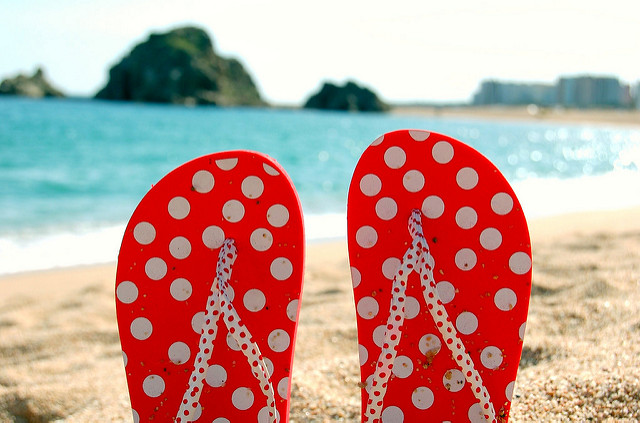Flip Flop Season

It’s officially summer, and although we haven’t had the warmest summer yet, we are starting to sport our sandals and flip flops a lot more these days. They definitely are more breathable and comfortable in the warmer weather, but when it comes to going for a long walk or standing all day in them, they aren’t the best choice of footwear.
Why? Most sandals have minimal arch support and cushioning for your feet and this can lead to many painful conditions such as:
- Plantar fascitis: This occurs when the plantar fascia (the arch of your foot) gets overloaded. With less support from the shoe, more strain goes into bottom of the foot. This feels like sharp pain in your arch with the first few steps in the morning and gradually eases as you walk around more.
- Tibialis posterior tendinitis: Your tibialis posterior is a muscle that controls your arch from collapsing. With flip flops, this muscle goes into overdrive and results in getting overworked and inflamed. This feels like a constant pain on the inner side of your foot and ankle, often tender to the touch and with some swelling.
- Knee pain: When your arches are not well supported, what often follows is a collapse of your knee inwards putting strain on structures such as your medial collateral ligament or your meniscus. This feels like achy pain on the inner side of your knee.
- Back pain: Your arches are meant to be shock absorbers for the body. If they are collapsed in the shoe, then there is no ability for them to absorb shock, so extra forces go up the chain into the back. This back pain is often dull and achy, but can also feel like pinching which may indicate your SI joint is irritated as well.
So what to do? First off, try to limit your time walking around in flip flops or unsupportive sandals. If you really want to keep wearing these minimalist shoes, you need to train your body to adapt to them. This means strengthening your arches and gradually increasing your endurance to being practically barefoot.
Another option is to get more supportive sandals. There are some great options at MEC, Kintec, and The Right Shoe. My personal favorites are Birkenstocks and Keens. If you already are suffering from any of the conditions mentioned above, you should definitely wear supportive shoes for the next while. If things don’t settle down in a few weeks, then you should get your issue assessed by a physiotherapist.
Jessie Wu, MPT, ConnectTherapy™, Clinical Pilates, CAFCI

About twice a month our therapists will be posting answers to commonly asked questions. So, if you have a burning question that you want answered let us know in the comments below.
We can cover anything ranging from active rehabilitation, to injury prevention.
This week our featured therapist is Jessie Wu. To learn more about Jessie check out our PhysioWorks team.


Leave a Reply